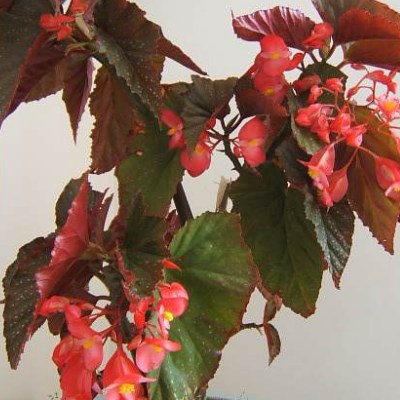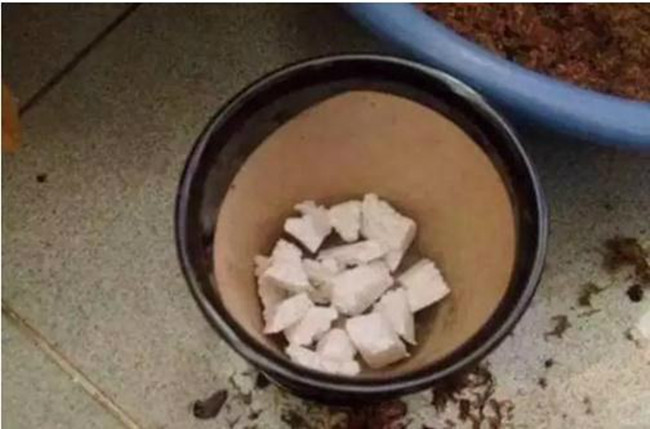Can fragrant wood really drive mosquitoes? what if the leaves turn yellow?
Fragrant wood is a kind of plant with strong pepper flavor, and it is a good ornamental plant, so can fragrant wood really drive mosquitoes? What if the leaves of fragrant wood turn yellow?

Can fragrant wood really repel mosquitoes:
The whole plant has a strong pepper flavor, has the effect of purifying the air and repelling mosquitoes and flies, but the mosquito repellent effect of fragrant wood is not obvious, precisely speaking, it has no mosquito repellent effect.
In fact, many aromatic plants do give off a smell that mosquitoes do not like, when encountered with these plants, mosquitoes will automatically detour. These plants do ward off mosquitoes and insects, but most of them only work for themselves. For these plants to be able to ward off mosquitoes in humans, they must be planted large enough to be effective when the fragrance in the air reaches a certain concentration. On the other hand, the capturing ability of artificially cultured pitcher plants on the market has been degraded, unable to actively attract and quickly digest mosquitoes. And because the pitcher plant secretes more honey, it will attract a lot of bugs to gather around.
The soil of potted plants in summer is relatively humid and can easily become a breeding ground for mosquitoes. for members of the public who want to grow green plants, mosquito repellent grass is indeed a good choice, because even if such plants have limited mosquito repellent capacity, they will not attract mosquitoes. However, for people with respiratory diseases, such as asthma, planting these aromatic plants is not recommended because the smell is easy to make people feel nauseous and dizzy, and it is not recommended to plant such plants indoors. It can be placed near a well-ventilated window.
What if the leaves of fragrant wood turn yellow:
1. Yellowing of fragrant wood leaves caused by improper watering
The seedlings of fragrant wood are afraid of waterlogging, and if they are watered too frequently, it can easily lead to stagnant water and damage the roots of the seedlings.
If the leaves of fragrant wood turn yellow due to too much watering, stop watering immediately and wait for the water in the basin soil to be fully drained. Don't do any watering during this period!
In addition, fragrant wood likes the soil that is not easy to accumulate water, and its drainage must be good. If the flower soil in your home does not meet this requirement, move the pot as soon as possible for the health of the flower.
Correct watering posture: the watering time is that the basin soil is dry and then watered again, every 3-5 days, thoroughly irrigating the soil each time. The amount of water varies with the season, and the amount of water is the largest from the end of spring to autumn; when the temperature decreases in winter, the evaporation of water decreases, and the amount of watering decreases accordingly.
2. Yellowing of fragrant wood leaves caused by excessive fertilization
In the same way as watering, many flower lovers feel that it is better to fertilize flowers as much as possible, but they do not realize that it is harmful to love flowers.
As for fragrant wood, especially the seedlings of fragrant wood, the demand for fertilizer is very low, only thin fertilizer is needed to meet the needs of growth, if excessive fertilization will certainly lead to yellowing (burning seedlings) and excessive growth of seedling leaves.
3. Yellowing of leaves caused by lack of light
Fragrant wood does not like the dark environment, so be sure to put it in a sunny place, but be careful not to expose yourself to the sun. Try to meet the sunshine needs of fragrant wood, and do a good job in the environmental management of ventilation and ventilation, and maintain a certain temperature in winter to avoid frostbite, so that the leaves turn yellow, wither and fall off all away from us!
4. Leaf shedding caused by outdoor environment
The potted fragrant wood can not be planted outdoors in the windy environment, because the leaves of the fragrant wood can not withstand the pressure of the strong wind and will fall off one after another. Put the fragrant wood indoors quickly at this time!
Fragrant wood can withstand the low temperature of minus 10 degrees Celsius in winter, but as hosts, we still have to protect the flowers. As long as the fragrant wood is kept indoors in winter, there will be no problem.
All right, friends, you all understand clearly, you know that fragrant wood can't actually repel mosquitoes.
Can fragrant wood drive mosquitoes? is mosquito repellent effective?
The arrival of hot summer, mosquitoes began to rampant, in flower and bird markets and other places, many businesses put fragrant wood on the counter, this kind of fragrant plant is used as a green mosquito control method, can fragrant wood drive mosquitoes? Is the mosquito repellent effect of fragrant wood good? Let's learn more about it.
Can fragrant wood repel mosquitoes:
The whole plant has a strong pepper flavor, has the effect of purifying the air and repelling mosquitoes and flies, but the mosquito repellent effect of fragrant wood is not obvious, precisely speaking, it has no mosquito repellent effect.
In fact, many aromatic plants do give off a smell that mosquitoes do not like, when encountered with these plants, mosquitoes will automatically detour. These plants do ward off mosquitoes and insects, but most of them only work for themselves. For these plants to be able to ward off mosquitoes in humans, they must be planted large enough to be effective when the fragrance in the air reaches a certain concentration. On the other hand, the capturing ability of artificially cultured pitcher plants on the market has been degraded, unable to actively attract and quickly digest mosquitoes. And because the pitcher plant secretes more honey, it will attract a lot of bugs to gather around.
The soil of potted plants in summer is relatively humid and can easily become a breeding ground for mosquitoes. for members of the public who want to grow green plants, mosquito repellent grass is indeed a good choice, because even if such plants have limited mosquito repellent capacity, they will not attract mosquitoes. However, for people with respiratory diseases, such as asthma, planting these aromatic plants is not recommended because the smell is easy to make people feel nauseous and dizzy, and it is not recommended to plant such plants indoors. It can be placed near a well-ventilated window.
Does fragrant wood have a good effect on repelling mosquitoes:
The mosquito repellent effect of Qingxiang wood is not obvious. Therefore, summer mosquito prevention, can not only rely on fragrant wood, care for hygiene, the choice of suitable mosquito repellent products is the key.
Home-raised fragrant wood-the reason for the yellowing of the leaves of fragrant wood is a plant of the family Umbelliferae, with fragrant leaves and red leaves and fruits. It can still survive at a low temperature of minus 10 degrees Celsius, and likes the soil where there is plenty of light and it is not easy to accumulate water. But fragrant wood has what kind of habits, so to cultivate fragrant wood? In the process of planting fragrant wood, many problems may be encountered, such as: why do the leaves of fragrant wood turn yellow? The reasons for the yellowing of the leaves of fragrant wood in family farming 1. The seedlings need to pay attention to the problem 1. The seedlings of fragrant wood are afraid of waterlogging, so don't water too frequently and the loose soil is not easy to accumulate water. two。 Seedlings are afraid of shade, so seedlings must be placed in a sunny place to avoid exposure to the sun, try to meet its demand for sunlight, and do a good job of anti-freezing in winter. Enhance the ventilation and ventilation of the seedlings. 3. Seedlings do not have high requirements for fertilizer, fertilization should be thin, too much will lead to seedling burning or overgrowth. Family cultivated fragrant wood-the reason for the yellowing of fragrant wood leaves 2. Soil and watered fragrant wood require loose, fertile and well-drained soil, although the soil is lax and can withstand drought and barrenness. it can adapt to slightly acidic, medium and slightly alkaline sandy and clayey soils. The soil of potted plants varies from place to place, but the soil that is loose, fertile and well drained is the best, so when cultivating fragrant wood, the soil planted with fragrant wood can be mixed with loam, humus soil and peat soil at 1:1:1. Watering should wait until the soil in the basin is dry and then irrigated every 5 days. Let the water permeate the soil each time. The amount of watering varies according to different seasons, and the amount of watering is the largest from late spring to autumn each year; when the temperature decreases in winter, the evaporation of water decreases, and the amount of watering decreases accordingly. Family breeding fragrant wood-the reason why the leaves of fragrant wood turn yellow. Third, sunny fragrant wood likes half-yin and half-yang plants, so you can let the fragrant wood bask in the sun every day, but do not expose yourself for a long time. Under normal circumstances, put it on the balcony and a sunny place indoors. At the same time, fragrant wood can not bask in the sun for a few days, and there is no big problem. The reason for the yellowing of fragrant wood leaves in family farming there are only two reasons for the yellowing of fragrant wood leaves: 1. Watering too much water harms the root system of fragrant wood; 2. There is not enough sunshine. The reason for the yellowing of the leaves of fragrant wood in family farming
Conclusion: the above is the breeding method of fragrant wood. I hope it can help friends who like to plant fragrant wood, or those who encounter problems now.
- Prev

Bamboo crabapple originally grew in Brazil, is a more suitable for garden potted plants, then bamboo crabapple does not blossom? How to trim bamboo crabapple? Bamboo crabapple does not blossom how to do: 1. Bamboo crabapple with improper planting management is a plant with shallow roots.
- Next

Can I use foam at the bottom of the green turnip pad? the root is strong and the pot is not rotten.
Green pineapple, which is available in many people's homes, is super easy to breed and is generally hydroponic, so can green turnip pad the bottom of the basin with foam: usually when we buy household appliances, a lot of foam is padded inside. Cut a large piece of foam into small pieces with scissors and cushion the green turnip on the bottom of the basin.
Related
- Fuxing push coffee new agricultural production and marketing class: lack of small-scale processing plants
- Jujube rice field leisure farm deep ploughing Yilan for five years to create a space for organic food and play
- Nongyu Farm-A trial of organic papaya for brave women with advanced technology
- Four points for attention in the prevention and control of diseases and insect pests of edible fungi
- How to add nutrient solution to Edible Fungi
- Is there any good way to control edible fungus mites?
- Open Inoculation Technology of Edible Fungi
- Is there any clever way to use fertilizer for edible fungus in winter?
- What agents are used to kill the pathogens of edible fungi in the mushroom shed?
- Rapid drying of Edible Fungi

